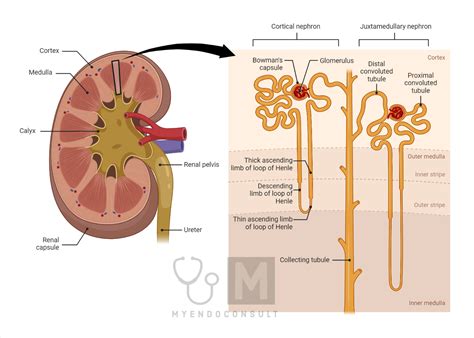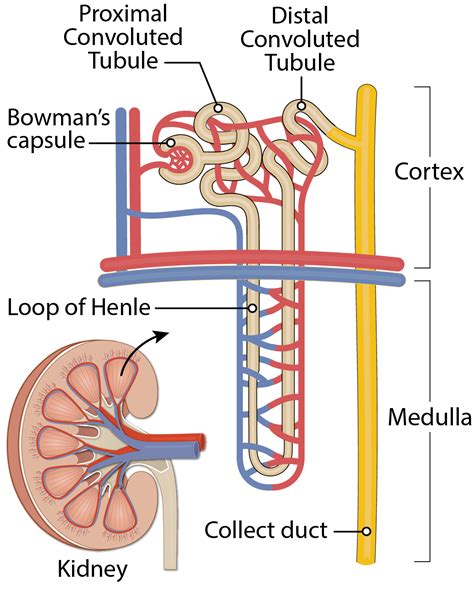The nephron is the functional unit of the kidney, responsible for filtering waste and excess fluids from the blood. Understanding the structure of the nephron is crucial for comprehending its functions. Below is a detailed labeling of the nephron diagram, highlighting its key components and their roles.
Nephron Structure

The nephron consists of several distinct parts, each with specific functions. These include the renal corpuscle, proximal convoluted tubule, loop of Henle, distal convoluted tubule, and the collecting duct.
Renal Corpuscle
The renal corpuscle is the initial part of the nephron and consists of the glomerulus and Bowman’s capsule. The glomerulus is a tuft of capillaries that allows for the filtration of blood, while Bowman’s capsule is a cup-like structure that surrounds the glomerulus and collects the filtrate.
| Component | Description |
|---|---|
| Glomerulus | Tuft of capillaries for blood filtration |
| Bowman's Capsule | Cup-like structure collecting filtrate |

Proximal Convoluted Tubule (PCT)
The proximal convoluted tubule is the first part of the renal tubule and is responsible for the reabsorption of most of the filtrate back into the bloodstream. This process includes the reabsorption of glucose, amino acids, and ions.
Loop of Henle
The loop of Henle is a U-shaped tube that extends deep into the medulla of the kidney. It plays a crucial role in concentrating the urine by creating a concentration gradient in the medulla. The loop of Henle consists of a descending limb and an ascending limb, with different permeabilities to water and ions.
Distal Convoluted Tubule (DCT)
The distal convoluted tubule is involved in the fine-tuning of electrolyte levels and the regulation of pH. It is also responsible for the reabsorption of calcium ions and the secretion of hydrogen ions.
Collecting Duct
The collecting duct is the final part of the nephron and plays a key role in the regulation of water balance. Under the influence of antidiuretic hormone (ADH), the collecting duct can increase water reabsorption, leading to more concentrated urine.
Key Points
- The nephron is the functional unit of the kidney, responsible for filtering waste and excess fluids.
- The renal corpuscle, consisting of the glomerulus and Bowman's capsule, is the site of blood filtration.
- The proximal convoluted tubule reabsorbs most of the filtrate back into the bloodstream.
- The loop of Henle concentrates the urine by creating a concentration gradient in the medulla.
- The distal convoluted tubule and collecting duct fine-tune electrolyte levels, regulate pH, and control water balance.
In conclusion, understanding the nephron diagram and its components is essential for grasping the mechanisms of kidney function and the maintenance of bodily homeostasis. Each part of the nephron plays a vital role in ensuring that waste products are removed and essential substances are retained in the body.
What is the primary function of the glomerulus in the nephron?
+The primary function of the glomerulus is to filter the blood, allowing small molecules like water, ions, and glucose to pass through while keeping larger molecules like proteins and blood cells in the bloodstream.
How does the loop of Henle contribute to urine concentration?
+The loop of Henle contributes to urine concentration by creating a concentration gradient in the medulla of the kidney. This gradient allows for the passive reabsorption of water from the collecting duct, concentrating the urine.
What role does the collecting duct play in regulating water balance?
+The collecting duct plays a crucial role in regulating water balance by controlling the amount of water reabsorbed into the bloodstream. Under the influence of antidiuretic hormone (ADH), the collecting duct increases water reabsorption, leading to more concentrated urine and helping to conserve body water.
